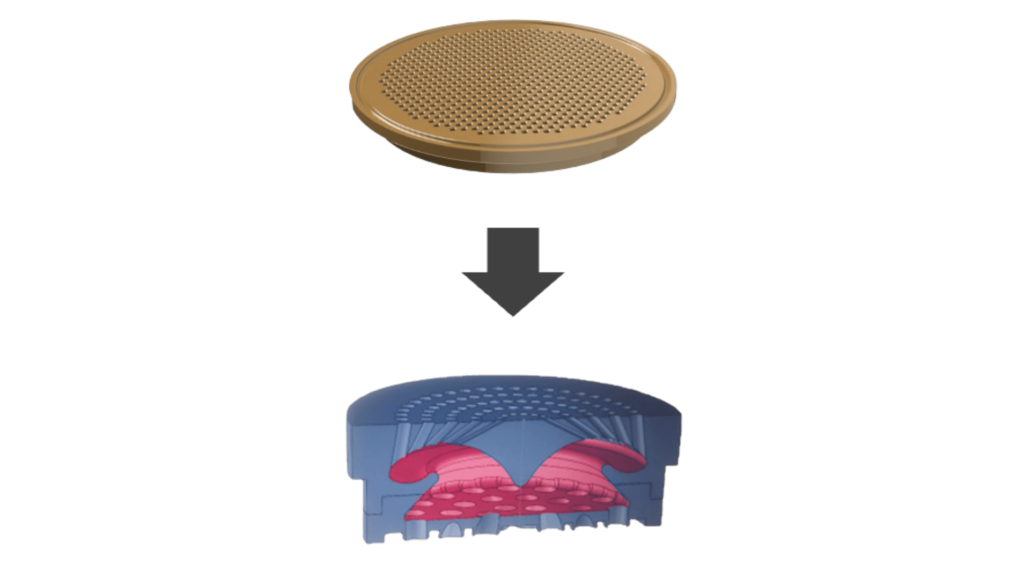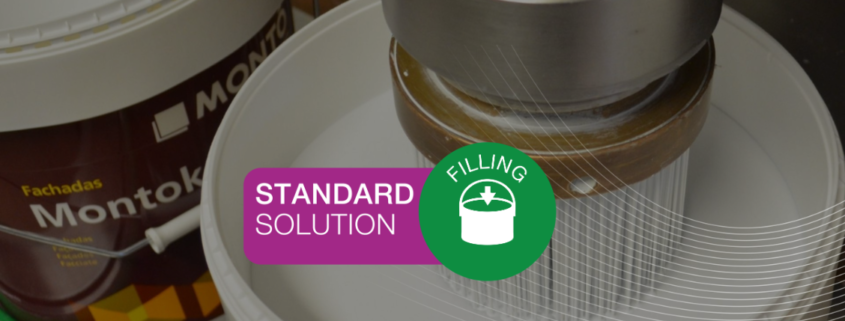Additive manufacturing of metering units enables 20% speed increase in paint production
Sergio Dunjo, Technical Director at Oliver + Batlle, advocates the strategic use of advanced tools such as additive manufacturing of dispensers to optimize cycle time in paint filling.
Challenges in filling optimization and their relation to additive manufacturing of dispensers
The transport time in the paint manufacturing process has almost reached its physical limit. Any reduction of this time compromises safety or quality. Therefore, when seeking to optimize manufacturing processes, the right choice is to focus on the dosing time, because this phase still allows significant margins for improvement.
Dosing is highly complex due to the wide variety of containers and products: plastic or metal cans, rectangular and oval formats… Each of these particularities requires adaptations in the process that add to the product’s own complexities, such as viscosity and density.
After trying to stress traditional solutions to improve the filling cycle time by incorporating up to four filling heads in our machines, Oliver + Batlle concluded that even then we would not achieve a proportional reduction in cycle time. To optimize filling processes with nozzles, we had to break the paradigm of traditional manufacturing, which is limiting technology. We had to completely rethink the process.
Additive manufacturing of dispensers: An efficient solution customized for each manufacturer
Additive manufacturing, also known as 3D printing, provided us with the solution we were looking for. With it, we were able to develop an optimized nozzle for the dispensing process that not only improved speed, but also filling accuracy by improving dispensing speed by 20% without compromising quality. And, in some cases, reducing the cycle time by 30%.
By creating nozzles layer by layer, 3D manufacturing facilitates customization for each customer and need – tailoring the design to product and packaging specifications – reduces production times and offers flexibility that is key to the demanding paint market. This allows our customers to be more responsive to market demands and significantly reduces lead times.

In short, additive manufacturing allows us to improve and optimize our filling equipment, maximize our technological capacity by adapting designs to every need, improve the quality of the final product, increase the application limits of our equipment and, with regard to the market, increase our differential value.
This solution also offers a kinder response to the environment by minimizing the waste of materials in the manufacture of the nozzles, since it only uses the amount necessary to manufacture the desired object.
If you would like us to evaluate your production process and study together how to implement improvements to increase the efficiency of your plant, please consult our engineers without obligation.
The future of additive manufacturing of dispensers and its influence on productivity
The future of additive manufacturing is promising, with constant advances in materials and techniques that will further increase the speed and quality of manufactured products. This technology is expected to continue to revolutionize various industries.
With the increasing adoption of artificial intelligence and machine learning, additive manufacturing has the potential to improve the efficiency of production processes, raising productivity to levels that previously seemed unattainable.


